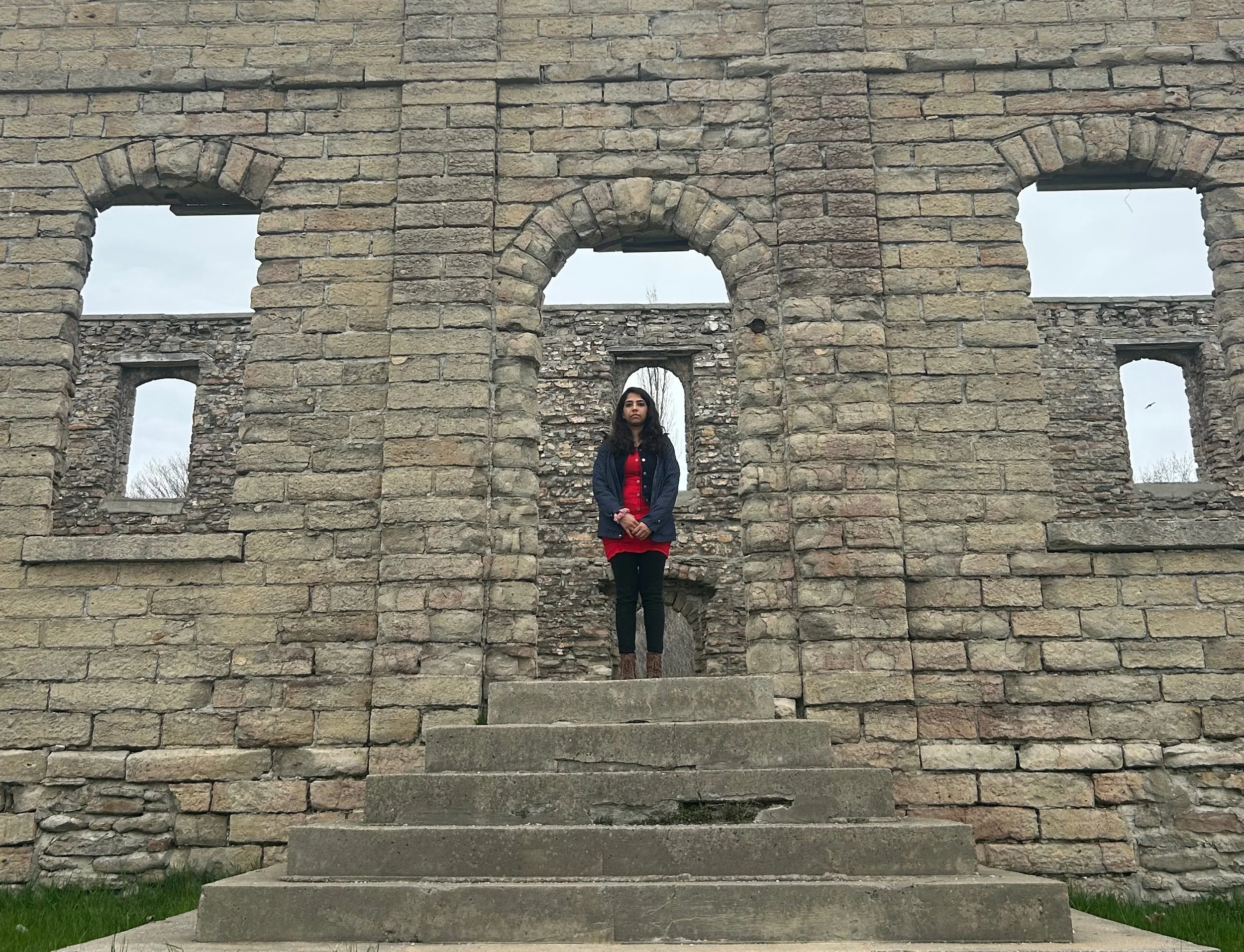Reflections on Canadian Identity on the National Day for Truth and Reconciliation
Kayona Karunakumar visiting the ruins of the Wiikwemikoong Indian Residential School, Manitoulin Island
Nothing gives me greater joy than seeking to live a life filled with meaning and purpose. Thus, I find September 30th to be a particularly meaningful day for me. Besides it being the National Day for Truth and Reconciliation in Canada, it is also the day the Circle for Democratic Solidarity was born. And as a volunteer with the Circle’s flagship Indigenous justice initiative, the Remembering Project, I think this beautiful quote from Her Excellency, Governor General Mary Simon, perfectly encapsulates the spirit of the Circle, which seeks to strengthen Canada’s democracy and invites Canadians to play a part in confronting the legacy of the Canadian residential school system:
“As we strive to acknowledge the horrors of the past, the suffering inflicted on Indigenous peoples, let us all stand side-by-side with grace and humility, and work together to build a better future for all.”
While I may not be as pensive as Auguste Rodin’s Thinker, I nonetheless reflect often on what being Canadian means to me. Though my family’s roots originate in Sri Lanka (formerly known as Ceylon), I’ve been privileged to call Canada home since early childhood and grow up in the Greater Toronto Area, whose multicultural light shines on the world stage as a rainbow brightens up a cloudy sky.
When asked where I am from, I generally respond by saying that I’m Canadian. (At times, though, I am thought to be Indian). If asked, I’m a Canadian of Sri Lankan heritage. A more thorough answer often includes how many years I’ve been in Canada and when I immigrated to the country. Yet still, at various times, I’ve considered myself to be a hyphenated and an un-hyphenated Canadian.
My musings on my personal identity led me to consider the origins of “Canadian” identity. Interestingly, the word “Canada”, according to the Canadian government’s website, derives from “Kanata” – a word found in both Huron and Iroquoian languages meaning “settlement” or “village”! Looking back on history, Jacques Cartier misapplied the word originally referring to what was Stadacona, the former Indigenous village where present-day Quebec City now stands, to the broader area presided over by Chief Donnacona.
History rolled on, and the word “Kanata” gradually meant the whole country. As a Canadian citizen, I am encouraged to know of the humble origins of one of the world’s greatest nations, though I’m disheartened to know that even then, Indigenous culture was not fully appreciated.
Since Christopher Columbus, Indigenous peoples have been mistakenly considered “Indian”. Even Bannock, a traditional Indigenous bread, has sometimes been labelled “Indian bread,” despite bearing no resemblance to South Asian roti, a type of flatbread.
These additional examples show how Indigenous identities have too often been disrespected and reveal that we’re still saddled with the obvious untruth that Canada’s Indigenous peoples were somehow named after a place half a world away in South Asia. If that misunderstanding could last for centuries, it’s no surprise that more harmful untruths—like denialism about colonialism’s impacts—still linger. The difference is that today, we’re actively working to correct the record.
- Kayona Karunakumar

